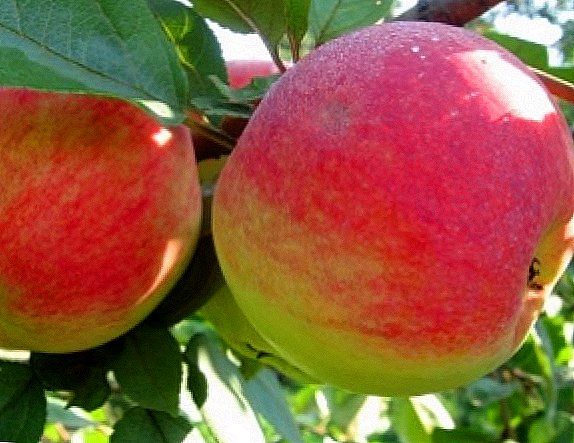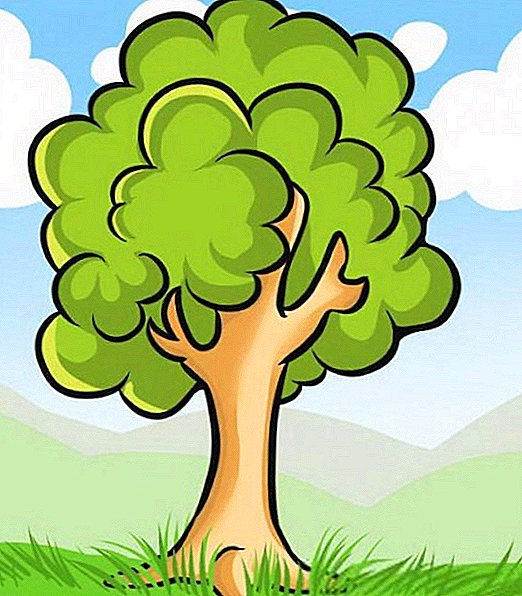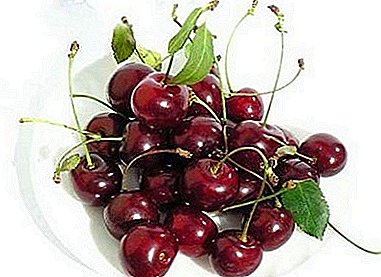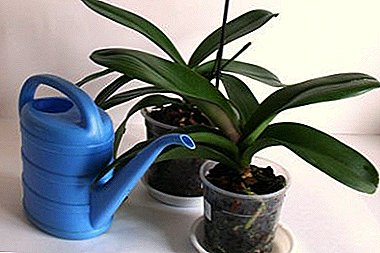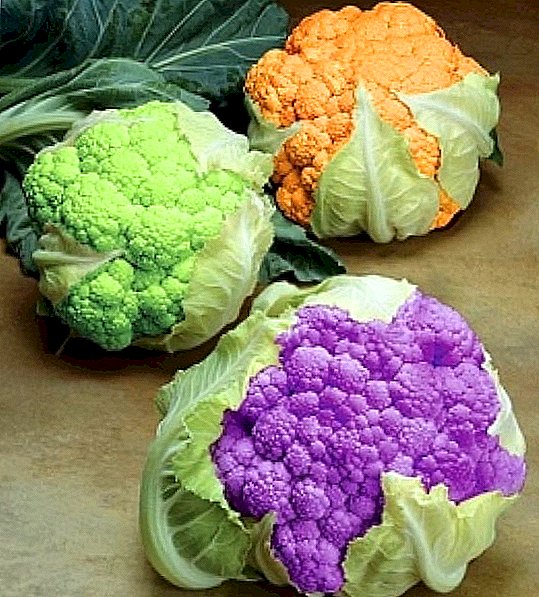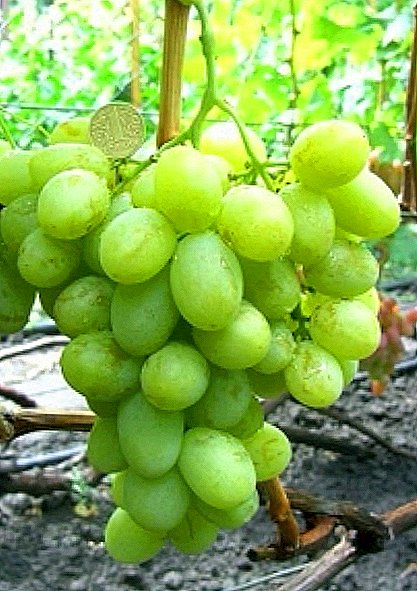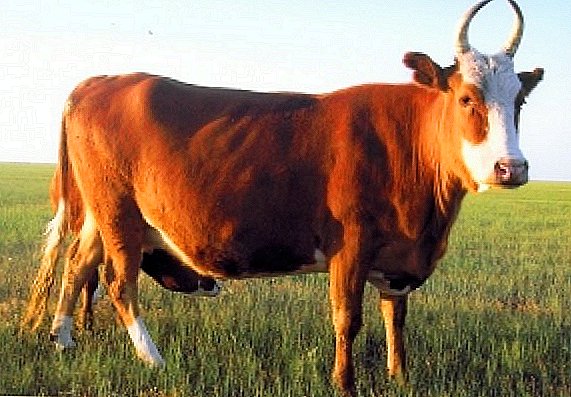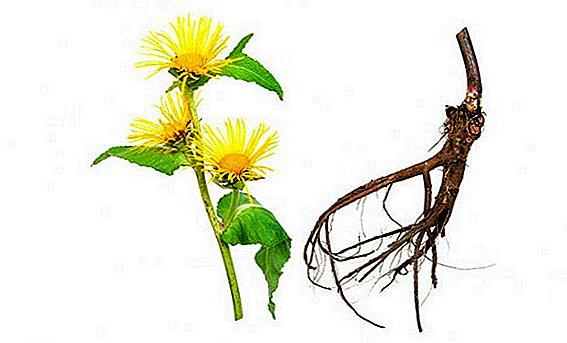 Traditional healers have used in their practice the virgin from the times of Ancient Rome, Ancient Greece and Tibet.
Traditional healers have used in their practice the virgin from the times of Ancient Rome, Ancient Greece and Tibet.
The healing power of herbs recognized modern doctors from all over the world. Today we will talk about the valuable properties of yellow color, concentrated in its underground part, as well as analyze a number of recipes.
Herb of elecampane: botanical description
Nine or yellow (Inula) - genus of perennial grasses of the Astrovye family. This is a tall shrub, reaching 1.5-2 meters in height. Multiple adventitious roots leave the thick and dense rhizomes. The stem is straight, rather dense, covered with grooves. The leaves have a bright appearance - they are large, oblong, pointed at the ends.  The lower side of the leaf blade is velvety felted, and the top is almost bare. Flowers are picked up in large baskets 7-8 cm in diameter, forming sparse brushes or shields. The shade of flowers varies from pale orange to bright yellow. It is the characteristic structure and color of the inflorescences that make it possible to notice the plant in the wild without confusing it with other samples.
The lower side of the leaf blade is velvety felted, and the top is almost bare. Flowers are picked up in large baskets 7-8 cm in diameter, forming sparse brushes or shields. The shade of flowers varies from pale orange to bright yellow. It is the characteristic structure and color of the inflorescences that make it possible to notice the plant in the wild without confusing it with other samples.
Did you know? The very name "devyasil" in the people decided to associate with the so-called nine forces of herbs or with nine ills (in ancient times used "against nine ills"). Perennial also called wild sunflower. The blooming grass is really similar to the sunflower - both its height and bright yellow color with a large core and long petals. There are several more curious folk names: the ear of a bear, yellow, animal grass, Haman, Oman meadow, smart, nine-force, Diver, devysilnik, yellow button.
The phase of active flowering occurs in July-September, after which the bright flowers are replaced by fruits - grayish-brown elongated seeds with a "hair". Fetal length - 3-5 mm.  Perennial distributed in Europe, Asia and Africa. In the wild, grass lives everywhere - on the edges of deciduous and pine forests, on meadows with good humidity, on the banks of rivers, lakes and mountain streams, among shrubs, in fields, near water bodies, and also in areas where groundwater occurs. In addition, the plant can be found in the forest-steppe and mountain forests at an altitude of up to 2000 meters.
Perennial distributed in Europe, Asia and Africa. In the wild, grass lives everywhere - on the edges of deciduous and pine forests, on meadows with good humidity, on the banks of rivers, lakes and mountain streams, among shrubs, in fields, near water bodies, and also in areas where groundwater occurs. In addition, the plant can be found in the forest-steppe and mountain forests at an altitude of up to 2000 meters.
We advise you to read about the medicinal properties, the collection and use of the roots of celery, sunflower, Kalgan, burdock, headwater.
The composition of the roots and rhizomes
The underground part of wild sunflower contains inulin (up to 44%), inulenin and other natural polysaccharides, bitter substances, essential oil (up to 4.5%), saponins, resins, gum, mucus.  Essential oil, derived from the roots of the herb, has a high biological activity and determines the medicinal use of devatsil. The essential oil contains alantholactone (proazulene, gelenin), resins, mucus, dihydroalantholactone, freedelin, stigmastern, phytomelan, pectin, wax, gum, vitamin E. Alantolactone and the accompanying terpenoids are the main biologically active components of roots.
Essential oil, derived from the roots of the herb, has a high biological activity and determines the medicinal use of devatsil. The essential oil contains alantholactone (proazulene, gelenin), resins, mucus, dihydroalantholactone, freedelin, stigmastern, phytomelan, pectin, wax, gum, vitamin E. Alantolactone and the accompanying terpenoids are the main biologically active components of roots.
In addition to the above substances, in small quantities in the healing raw materials found:
- alkaloids, flavonoids, gelenin;
- organic acids (acetic acid, benzoic acid and others);
- vitamins (phylloquinone and ascorbic acid);
- micro- and macronutrients (manganese, magnesium, potassium, calcium, iron).
The treasury of traditional medicine contains many recipes using different herbs: celandine, St. John's wort, knotweed, wormwood (bitter, medicinal, ordinary), motherwort, mother-and-stepmother, lovage, Lyonian, Chervil, burdock, plantain, chicory, yarrow, calendula
The benefits of yellow
Drugs based on yellow essential oil have a high antiflogistichesky, bactericidal, antifungal, antispasmodic, sedative, hemostatic, antiallergic and a number of other actions.  The essential oil extracted from the roots has a positive effect on intestinal motility, reducing inflammation and strengthening the general condition. Wild sunflower stabilizes the functions of the digestive system. In a patient, the focus of inflammation in the stomach decreases, appetite improves, the amount of gastric juice decreases, and its acidity decreases. In the pharmaceutical industry, a drug was released based on dried Oman roots. The tool is called "Alanton" and is effective in the treatment of gastric and intestinal ulcers.
The essential oil extracted from the roots has a positive effect on intestinal motility, reducing inflammation and strengthening the general condition. Wild sunflower stabilizes the functions of the digestive system. In a patient, the focus of inflammation in the stomach decreases, appetite improves, the amount of gastric juice decreases, and its acidity decreases. In the pharmaceutical industry, a drug was released based on dried Oman roots. The tool is called "Alanton" and is effective in the treatment of gastric and intestinal ulcers.
To get rid of helminths (parasites), the medicine alantolactone, also made from the roots of devyasilnik, is produced.
Also marked diuretic and antihelminthic effect drugs from the root of deviacilla. A slight biliary and diuretic effect is manifested. Essential oil is detrimental for some types of worms. Due to the antiseptic effect putrid processes stop.
Learn more about the benefits and the preparation of drugs from elecampane.
Yellow rhizome has long been used in therapy catarrhal ailments. Liquefying viscous mucus in the bronchi, decoctions and infusions helped to achieve an expectorant effect. To this end, the raw material is used in modern professional medicine. Harvesting from the roots of deviacela, licorice and naked althea are treated for acute and chronic diseases of the upper respiratory tract.  In folk medicine, the roots of this herb occupy one of the places of honor in the treatment of a wide range of ailments. In addition to the gastrointestinal sphere, decoctions of the roots are prescribed for hypertension, in female diseases, in diseases of the kidneys and other internal organs. Root is also used as an external agent: water and alcohol infusions help with inflammation of the gums, with various lesions of the skin.
In folk medicine, the roots of this herb occupy one of the places of honor in the treatment of a wide range of ailments. In addition to the gastrointestinal sphere, decoctions of the roots are prescribed for hypertension, in female diseases, in diseases of the kidneys and other internal organs. Root is also used as an external agent: water and alcohol infusions help with inflammation of the gums, with various lesions of the skin.
For women's health, shepherd's purse, borova uterus, oregano, medunitsa, kalanchoe, lavender, chamomile are useful.
Preparation and storage of medicinal raw materials
Today, the virgin is increasingly cultivated in gardens and front gardens. For medical purposes, usually collected and harvested rhizome nine high, rarely - Japanese.
When and how to collect the plant
Roots are harvested from late August to September (inclusive). Choose tall perennials with a wide, straight stem and fully ripened fruits. Grass should be the second year of life and older. The roots of such plants are the most valuable - they have the highest healing qualities.  Less often, raw materials are harvested in early spring, immediately after the appearance of the first leaves on the shoot. In this case, the collection of roots is preferable to produce from plants of the third year of life and older, since younger specimens do not contain a sufficient number of useful properties.
Less often, raw materials are harvested in early spring, immediately after the appearance of the first leaves on the shoot. In this case, the collection of roots is preferable to produce from plants of the third year of life and older, since younger specimens do not contain a sufficient number of useful properties.
Important! To collect the yellow color, choose environmentally friendly areas. It is categorically not recommended to collect the roots near factories, landfills, busy highways, livestock farms, grazing sites herds of cows and other animals.
To extract the roots from the ground, dig up the root system within a radius of 20 cm from the shoot to a depth of 35-40 cm and gently pull the rhizome to the surface.
Video: how to collect root devyasila
Harvesting and drying of roots and rhizomes
For further use, the roots must be shaken off the remnants of the soil, cut off the stems and all small shoots at the root. From the total mass, select only intact samples. Blackened, dead, soft and parasitically damaged roots must be removed. Wash the selected raw materials thoroughly under cold running water.  If the individual roots were quite wide and dense, they need to be cut into pieces of 10-15 cm in length. Spread vegetable raw material in one layer on paper and leave to fade in the open air under the rays of the sun for the first 2-3 days. Then the roots must be thoroughly dried.
If the individual roots were quite wide and dense, they need to be cut into pieces of 10-15 cm in length. Spread vegetable raw material in one layer on paper and leave to fade in the open air under the rays of the sun for the first 2-3 days. Then the roots must be thoroughly dried.
To do this, soak the raw materials either in a well-ventilated, warm room, or under a canopy, or in a dryer at a temperature of + 30-35 ° C. It is desirable to abandon the oven, otherwise the entire healing effect of the plant will be lost. Well-dried raw materials can be identified by the gray-brown color on the outside and pale yellow at the cut. In addition, the roots should be easily split.
Read also about the healing properties of plants: maral root, martin root, golden root, red root, black root medicinal, Adam root.
Storage conditions
Ready medicinal raw materials must be kept in fabric bags, paper bags, glass or wooden containers. Keep the roots should be in a dark, dry, insulated from sunlight indoors.
Properly dried roots retain their healing properties for 3 years.
Application of roots of elecampane
Next, you will learn how to cook a devysil to preserve all his healing power. At home, various medicinal products of both internal and external use are made from the dry roots of Deviacilla. Such drugs are prescribed depending on the existing health problem. 
Decoction
For brewing broth 15-20 g of crushed dry raw material, pour 200-250 ml of water. Boil the mixture for 10 minutes, then strain. Take orally in the form of heat, 1-2 tbsp. l 3-4 times a day, half an hour before meals. This decoction is useful in the role of anthelmintic, biliary and diuretic, as well as expectorant cough.
As an anti-inflammatory agent, herbal decoction of 100 g of roots and 1 liter of water, boiled over 4 hours, is used for rubbing or added to the bath. It is also used for compresses and lotions to heal wounds.
Did you know? According to the legend, it was thanks to the miraculous properties of the devyala that Ilya Muromets was able to get up after 33 years of lying. Having tasted a healing broth, the famous hero got out of bed. It is also known that Ninja actively used clairvoyants. It was believed that if the plant was put on smolder, it would help to awaken spiritual strength.
Infusion
Preparing the infusion in an unusual way - by "cold infusion." For this, 1 tbsp. l dry crushed rhizomes pour 250 ml of pre-boiled and cooled water. Duration of infusion - 8-10 hours. At the end of the process, strain the liquid. Take the infusion inside for 25 minutes before a meal, 50 ml 4 times a day. Prescribes a remedy for gastrointestinal diseases (ulcers, gastritis with low acidity and colitis), diseases of the kidneys and bladder, diarrhea, hemorrhoids, high pressure. The tool improves expectoration, helps with bronchitis and tuberculosis.  We also give a recipe for effective infusion for external use in the treatment of stomatitis, tonsillitis. Mix 10 g of roots with 200 g of boiling water and leave for 20 minutes in a water bath. Then pour in boiling water to make an initial volume. Cool and rinse throat three times a day.
We also give a recipe for effective infusion for external use in the treatment of stomatitis, tonsillitis. Mix 10 g of roots with 200 g of boiling water and leave for 20 minutes in a water bath. Then pour in boiling water to make an initial volume. Cool and rinse throat three times a day.
Did you know? One of the ancient Greek legends tells that the yellow color grew out of the tears of Helen the Beautiful, which Paris kidnapped. Since then, Oman is popularly called Elenina grass and is considered not only a curative plant, but also a means of preserving and protecting female beauty.
Tincture
The method of preparation of the tincture of vodka: 1 tbsp. l chopped dried roots pour 0.5 liters of vodka. Hold until liquid turns yellow. Take orally 4 times a day. Single dose - 25 drops. Assign with pain in the stomach.
Outwardly, this tincture can be used to treat most skin diseases, including parasitic (scabies, lichen, etc.).
Familiarize yourself with recipes for making healthier infusions: sabelnik, horse chestnut, lilac, aconite, propolis.
Video: virgin wine tincture
Ointment
To prepare the ointment, mix 1 tbsp. l powdered dry roots and 4-5 tbsp. l unsalted minced fat. Boil the resulting mass on low heat for 15 minutes, then strain through cheesecloth (the mass should not cool off).
Lubricate the ointment with the finished ointment. Repeat the procedure 1 time per day until a noticeable improvement occurs, then for 2-3 days, the affected areas should be washed with warm water (see the recipe above).
Ointment should be made in small portions and stored in the refrigerator. The tool eliminates burns, heals wounds, reduces scars formed during healing, and helps with skin diseases.
Important! We remind you that self-medication may not be safe for your body. Before using the healing root, consult with your doctor.
Harm and contraindications
Despite numerous healing properties, there are certain contraindications for taking root rootsabout which you need to know:
- individual intolerance to the components of the essential oil;
- in the period of carrying a child (can cause miscarriage);
- during menstruation (able to significantly increase bleeding);
- severe cardiovascular diseases, in particular, atherosclerosis;
- gastritis with reduced acidity;
- nephritis and other renal dysfunction;
- bowel disease with a symptom of atopic constipation;
- excessive blood viscosity.
 In the treatment of devyasilom and drugs, of which he is a part, should strictly adhere to the instructions and do not exceed the dosage.
In the treatment of devyasilom and drugs, of which he is a part, should strictly adhere to the instructions and do not exceed the dosage.
Abuse causes poisoning with associated symptoms:
- allergic reaction;
- weakness;
- heart failure
- dizziness;
- nausea and vomiting;
- stomach pains;
- slow breathing;
- increased drooling.
Important! At the slightest adverse effect refuse further therapy and, if necessary, consult a doctor.
Application root of elecampane: reviews



Based on the foregoing, the benefits of wild sunflower for human health should not be in doubt. However, even the seemingly innocent, plant root requires caution in the application and compliance with the dosage. A preliminary consultation with a specialist will protect you from unnecessary problems.


